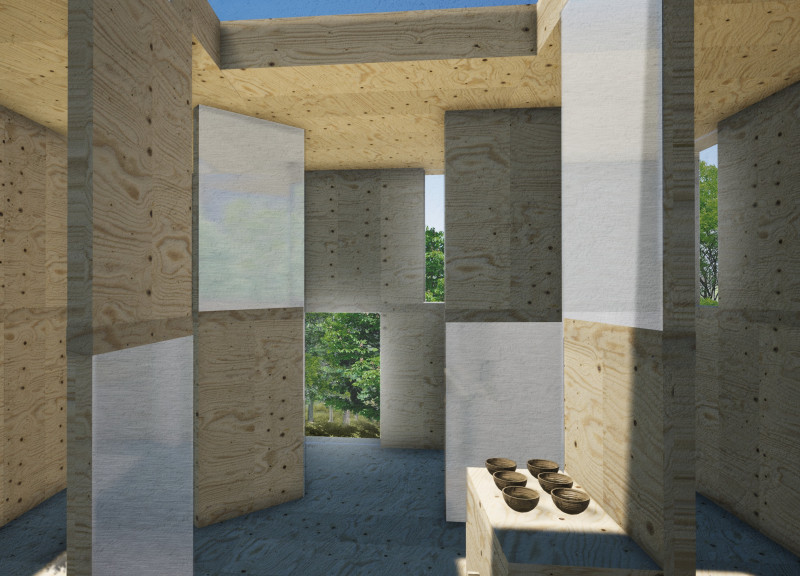5 key facts about this project
The TINY KIWI Meditation Cabin is a thoughtfully designed space focused on mindfulness and introspection. Located within a natural environment, the cabin serves as a retreat that allows users to escape the pressures of everyday life. The design aims to create a close connection between people and nature, facilitating moments of reflection and calm.
Design Concept
The architecture of the TINY KIWI Meditation Cabin is centered on the idea of merging the built environment with its surroundings. As a floating structure, it provides a dedicated space for tranquility, allowing users to transition from a busy world to a peaceful setting. The arrangement of spaces encourages users to experience a deeper connection to nature, underscoring the significance of meditation in everyday life.
Materials and Aesthetics
The cabin features solid wood planks along with anodized and polished aluminum panels. These materials not only enhance the visual appeal but also support the overall design concept. The entrance acts as a welcoming threshold that invites individuals to enter a quieter state of mind, reflecting the beauty of the environment beyond it.
Spatial Organization
Inside, the spaces are purposefully laid out to promote privacy and comfort. Key structural elements create areas where individuals can meditate without interruption, fostering a sense of security. A rolling cabinet serves a dual purpose: functioning as an altar and providing storage for meditation mats. This design choice aligns with the cabin's minimalist approach, emphasizing practicality alongside aesthetic quality.
Sustainability and Functionality
The TINY KIWI Meditation Cabin focuses on sustainability, relying solely on direct solar energy for heating. This approach demonstrates a commitment to environmental care and enhances the connection between users and their surroundings. Additionally, the use of sliding windows and wooden frame rails provides flexibility, allowing the inside and outside to interact.
The design features windows that can disappear completely, allowing for an extended view of the natural landscape. This detail creates a strong link between the cabin and the environment, enabling nature to flow unobstructed into the meditative space.






















































